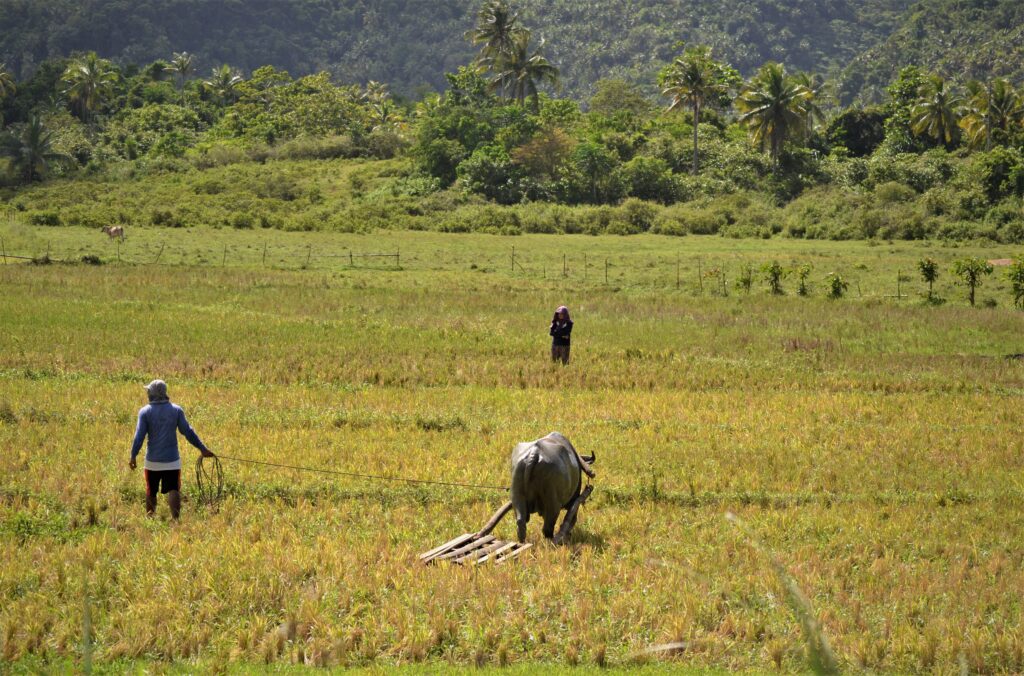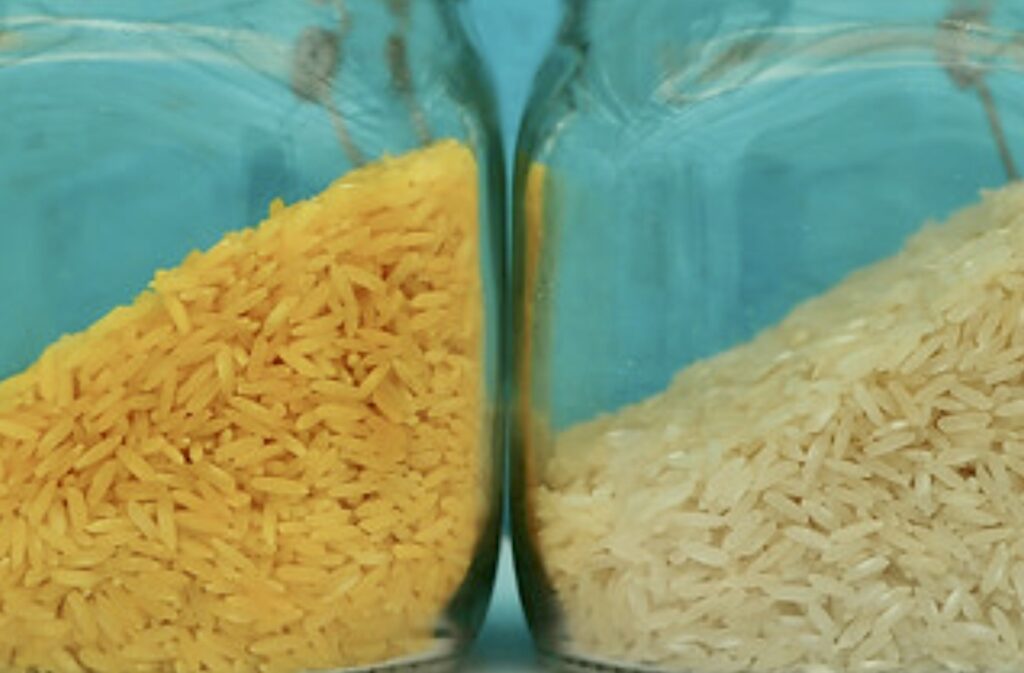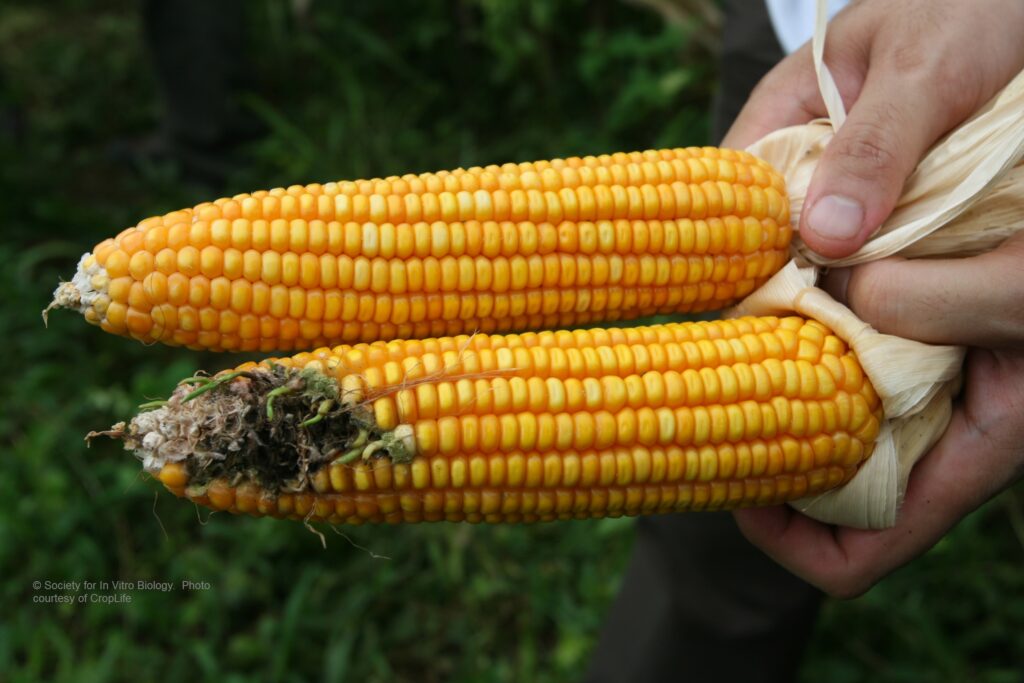Text and Photos by Henrylito D. Tacio
Here are some of the agricultural stories that made headlines in 2021:
Golden rice: Game changer in rice production: A “potential game changer for the rice industry in the country.” That was how House Ways and Means Chair Joey Sarte Salceda (Albay, Second District) described golden rice after learning that the Bureau of Plant Industry (BPI) of the Department of Agriculture granted a biosafety permit for the commercial propagation of genetically-engineered cereal in the country.
“Rice accounts for one-fifth of the basket of goods for the poor. And agriculture in general accounts for 22.5% of the labor force, even though it merely contributes 8% to gross domestic product. So, anything that raises value for the sector, such as golden rice, will make a difference,” Salceda said.
Now, here comes Bt eggplant: Finally, the Bureau of Plant Industry (BAI) – a line agency of the Department of Agriculture (DA) – has approved the transgenic eggplant for direct use as food, feed, or for processing (FFP).
In issuing Biosafety Permit No. 21-078FFP, the eggplant – called Bt eggplant event ‘EE-1’ – is found “to be safe as conventional eggplant” and “can substitute for its traditional counterpart.”
The biosafety permit, which was sent to the University of the Philippines at Los Baños (UPLB), was issued after rigorous assessment pursuant to the Joint Department Circular (JDC) No. 1, Series of 2016 by five government agencies.
The good news was announced by the Laguna-based International Service for the Acquisition of Agri-Biotech Applications (ISAAA) in its website (www.isaaa.org). “The FFP approval of Bt eggplant is the latest milestone in the biosafety regulatory process in the Philippines,” ISAAA said in a statement. “To complete the biosafety regulatory process, Bt eggplant will need commercial propagation approval for environmental safety assessment before it can be made available to the public.”
Pancit canton with squash gaining popularity: Pancit canton is made of wheat flour and eggs. But some Filipino entrepreneurs are adding some twist to it: they literally add squash to the popular noodles. Yes, pancit canton with squash.
With technology coming from the Department of Science and Technology (DOST), some business-minded farmers of Cabadbaran City in Agusan del Norte tried it – with success.
“Farmers of this fertile valley in the eastern part of Mindanao have started processing their excess squash production into a high value product, a very tasty and nutritious pancit canton,” reported Emmanuel Piñol when he was still the chairman of the Mindanao Development Authority (MinDA).
Farming systems that can offset methane emissions from rice fields: Filipino farmers can help minimize methane emissions by adopting sustainable – yet profitable – farming systems. This is particularly true among farmers who grow rice on their farms.
Rice farmers can help offset the release of methane from irrigated rice fields by raising ducks. The integrated farming of rice and ducks in irrigated fields has long been practiced in China, Japan, and Korea.
Filipino rice farmers can also help reduce methane emissions released into the atmosphere by adopting controlled irrigation or alternate wetting and drying (AWD) technology, which the Laguna-based International Rice Research Institute (IRRI) has developed.

Farm production 
Golden rice and white rice (IRRI) 
Bt corn and traditional corn (Photo courtesy of BIOTECH)
A study headed by Cheryll C. Launio of the Philippine Rice Research Institute (PhilRice) found out that early incorporation of both stubble and straw into the soil is “the most cost-effective way of disposing rice straw.” More importantly, it can help reduce greenhouse gas emissions.
Urban farming possible answer to food insecurity: When pandemic stirred lockdowns and quarantines, agriculture experts then suggested urban agriculture as an alternative food security solution in urban areas.
“Urban agriculture refers not merely to the growing of food crops and fruit trees but that it also encompasses the raising of animals, poultry, fish, bees, rabbits, guinea pigs, or other livestock considered edible locally,” explains Dr. Irene Tinker, an American professor in the department of city and regional planning at the University of California.
Urban agriculture is nothing new. The hanging gardens in Babylon, for instance, were an example of urban agriculture, while residents of the first cities of ancient Iran, Syria, and Iraq produced vegetables in home gardens.
Oysters: An ally against COVID-19: Zinc – along with vitamin C and vitamin A – is one of the nutrients recommended by doctors to be taken against the coronavirus disease 2019 (COVID-19). It helps to slow down the immune response and control inflammation.
Zinc can be found in red meat, poultry, crabs, baked beans, chickpeas, and yogurt. One of the best sources of zinc is oyster; a 100-gram serving contains 605% of the reference daily intake (RDI).
Although low in calories, oysters are loaded with nutrients, including protein, healthy fats, and minerals. Aside from zinc, a 100-gram serving provides over 100% of the RDI for vitamin B12 and copper and over 75% of a person’s daily needs for selenium and vitamin D.
Fighting hunger through gardening: There are several ways of raising vegetables in the garden. But Dr. Eduardo P. Paningbatan, Jr., a retired professor of soil science at the University of the Philippines at Los Baños (UPLB), has developed a better and easier method.
He called it Enriched Potting Preparation (EPP). Designed for communities with little space for gardening, it can provide urban families with healthy and pesticide-free vegetables and herbs. EPP is an easy and affordable way of growing plants right in the comfort of everyone’s home.
Among the vegetables which can be grown using EPP are lettuce, pechay, mustard, tomato, eggplant, ampalaya, okra, ginger, beans, kangkong, sweet potato, saluyot, spring onion, hot pepper, sweet pepper, Chinese celery, cucumber, kale, kinchay, and spinach. For herbs, the following may be grown: basil, mint, parsley, sage, rosemary, thyme, wansoy, coriander, kaffir lime, tarragon, stevia, gotu kula, oregano, gynura, and mollocan.
Siganids can now be raised commercially: In the past, siganids were harvested only from the wild in the open seas. But today, thanks to science, they can be raised in brackishwater ponds, pens, and cages, as well as in sea pens and cages.
“Of the 26 species of siganids in the country, the two most commonly cultured are the Siganus guttatus (spotted variety) and Siganus vermiculatus (striped variety),” says Dr. Rafael D. Guerrero III, an academician at the National Academy of Science and Technology and former executive director of Philippine Council for Aquatic and Marine Research and Development.
Lowering tariffs on corn may kill production: Despite the abundance of corn production, the income of corn farmers didn’t increase. What made corn farmers even more cautious was when the Department of Agriculture (DA) will lower tariffs on corn imports. Doing so would mean a “death sentence” to farmers, given the prevailing low price of corn.
“(The implementation will bring) revenue loss of P10 billion,” said House Resolution 2289, which Cagayan de Oro Representative Rufus Rodriguez filed. The resolution is supported by the Philippine Maize Federation, Inc. (Philmaize) and the United Broilers and Raisers Association (UBRA). The resolution was directed as a petition to the National Economic Development Authority (NEDA) and the Tariff Commission.
So you want to raise your own bonsai?: Originally, the Japanese bonsai only attempted to produce small trees that mimic the shape of real-life trees. Today, it has become an umbrella term in English, attached to many forms of potted or other plants, and also on occasion to other living and non-living things.
As an art, bonsai is more than a thousand years old. As a hobby, it is very much rewarding. “All you need is a few basic materials and some basic tools,” The Hobby Nerd wrote in his blog. “You don’t even have to buy an ‘official bonsai tree’ because there really is no such thing! Bonsai isn’t a particular type of tree. It is the art of taking any type of tree or shrub and growing it and trimming it in ways so that it remains small yet has the proportions and uncanny look of its larger counterparts.”

